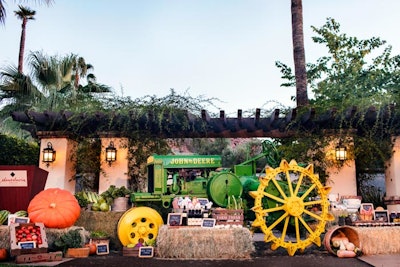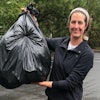
When Omni Hotels was planning its inaugural Desert to Dish culinary event in Scottsdale, Arizona, it sought a highly coveted partner: the James Beard Foundation. But securing the partnership was not a given.
Between product placements, events, and sponsorship opportunities, each day about 10 to 15 partnership proposals cross the desk of Izabela Wojcik, director of house programming for the James Beard Foundation. Every year, the foundation hosts roughly 300 on-site events at its headquarters, the James Beard House in New York City, but only participates in 20 to 30 outside events.
As one of the most well-known, highly respected culinary nonprofits in the country, the nearly 30-year-old foundation can lend its cache to events. With so many prospective partners, how do foundation decision makers choose the right opportunities to pursue?
Most importantly, the event must have a major food component. "Our events have to have a certain level of experience and quality, but they start and end with food," Wojcik says. As the purpose of the foundation is to raise money, events must also offer some sort of financial benefit, whether its in the form of a culinary scholarship, funds for a new initiative, chef boot camps, or money for other educational tools.
Events must also align with the foundations mission to celebrate, nurture, and honor America's diverse culinary heritage through programs that educate and inspire. Those elements helped the foundation decide to approve a partnership with Desert to Dish. "For us, Desert to Dish represented a few key things," Wojcik says. "First, it's a fabulous series of events all to benefit the J.B.F. culinary scholarship fund. Second, it engaged sponsors, local businesses, and diners."
Held in October, Desert to Dish invited chefs from across the country to tour farms in and around Phoenix, discover the local agricultural scene, and participate in a cooking competition inspired by the bounty. Guests bought tickets for the event and could also purchase raffle tickets. The proceeds benefited the foundation.
"Having such a prestigious name like the James Beard Foundation supporting our inaugural event really helped to elevate and enhance the messaging of our farming community," says Michael Cairns, executive chef at Omni Scottsdale Resort & Spa at Montelucia. "The purpose of Desert to Dish was to highlight the diversity and abundance of agriculture in Arizona, so to work with an organization that is known for honoring America's diverse culinary heritage made for an ideal partnership."
When considering event proposals, decision makers also looks out for red flags. The foundation protects its brand and reputation from inadvertent partnerships, so an event with heavy commercial sponsorship likely won’t be a good fit, even if turning down the opportunity means foregoing potential proceeds. Since chefs often like to choose their own ingredients and brands, partnerships that demand exclusivity are declined.
The foundation also avoids partnerships that would exploit the organization's resources and contacts. “If we feel like there is a proposal that will take advantage and put us in an unfavorable position, we decline," Wojcik says. "We work hard to maintain our relationships with chefs, and we want to make sure there is professionalism and respect on all sides."
Last, the foundation considers partner expectations and evaluates whether it can meet these criteria. "We want a good outcome, and that is critical to our methodology," Wojcik says. "The thinking process is: does it fit our vision, and how successful can we be if this is something we choose to undertake?”



















